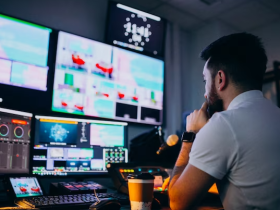Photogrammetry is a strong and progressively well-known method used to make 3D models and estimations from 2D pictures. Whether it’s in designing, engineering, social legacy conservation, or virtual reality, photogrammetry programming assumes a vital part in changing over imagery into precise and definite 3D portrayals. As the interest in photogrammetry keeps on developing, picking the right software becomes fundamental for effective and proficient projects. In this article, we will investigate the critical elements and variables to consider while searching for the best photogrammetry software.
Key Features and Factors to Note When Choosing the Best Photogrammetry Software
Accuracy and Precision
One of the most basic variables to consider in photogrammetry programming is its accuracy and precision in creating 3D models. The software ought to be fit for handling pictures with minimal distortion or error, guaranteeing that the subsequent 3D model closely matches this present real-world object or scene.
Search for software that utilizes progressed algorithms and powerful triangulation strategies to accomplish high accuracy in point cloud generation and mesh reconstruction. Also, the capacity to control and change the degree of detail in the last model can be crucial, as it considers tweaking the result to match the project requirements.
Processing Speed and Efficiency
The effectiveness of the photogrammetry software is another indispensable viewpoint, particularly while managing huge datasets or time-sensitive projects. The best photogrammetry software ought to be enhanced to deal with countless pictures effectively, limiting handling time while maintaining accuracy.
Real-time or near-real-time processing capacities can be a critical benefit, empowering clients to review results rapidly and make changes depending on the situation. In addition, multi-threading and GPU acceleration can significantly further develop processing speed, making the software reasonable for high-performance computing environments.

Ease of Use and User Interface
Ease of use and an instinctive UI are crucial considerations, particularly for those new to photogrammetry. Search for software that offers a reasonable and efficient interface, making it simple to explore through different functions and settings.
The capacity to automate certain steps in the photogrammetry cycle can likewise improve workflows and reduce the learning curve. Software with an easy-to-use interface assists clients with zeroing in on their creative and analytical tasks as opposed to getting stalled by technical complexities.
Compatibility and File Formats
Guarantee that the photogrammetry programming supports a wide range of image formats and is viable with commonly used cameras. The capacity to work with different picture types, including RAW files, guarantees more noteworthy adaptability in taking care of diverse data sources.
Furthermore, check for the compatibility of the software with well-known 3D modeling and design software. This compatibility empowers a consistent combination of photogrammetry outputs into different work processes and applications, improving the product’s general ease of use.
Export Options and Outputs
Consider the export options and supported output formats presented by the photogrammetry software. The capacity to send out 3D models in standard configurations like OBJ, or FBX, or facilitate collaboration with other professionals allows for easy integration into other software platforms.
Also, some photogrammetry software might give specific results, for example, orthophotos, point clouds, or textured 3D meshes. Evaluate which output formats adjust best to your project needs and the expected utilization of the 3D models.
Scalability and Project Size
Photogrammetry activities can fluctuate fundamentally in size and complexity, from small objects to extensive landscapes or buildings. The best photogrammetry software ought to be versatile to accommodate projects of different sizes without forfeiting performance or accuracy.
Consider the maximum number of images or points the software can deal with and guarantee it lines up with your particular project requirements. Adaptability is crucial to fulfill the needs of different tasks and guarantee the product stays proficient in any event while managing huge datasets.
Customer Support and Updates
Solid customer support and regular software updates are crucial angles to search for in the best photogrammetry software. Ideal updates guarantee that the product stays viable with the most recent hardware and operating systems, while customer support can help clients in investigating issues or responding to requests.
Conclusion
Choosing the best photogrammetry software is a vital choice that straightforwardly influences the achievement and efficiency of your projects. By taking into account factors like precision, processing speed, convenience, compatibility, export option, versatility, and customer support, you can track down the software that best suits your particular necessities and boosts the potential of photogrammetry technology.







